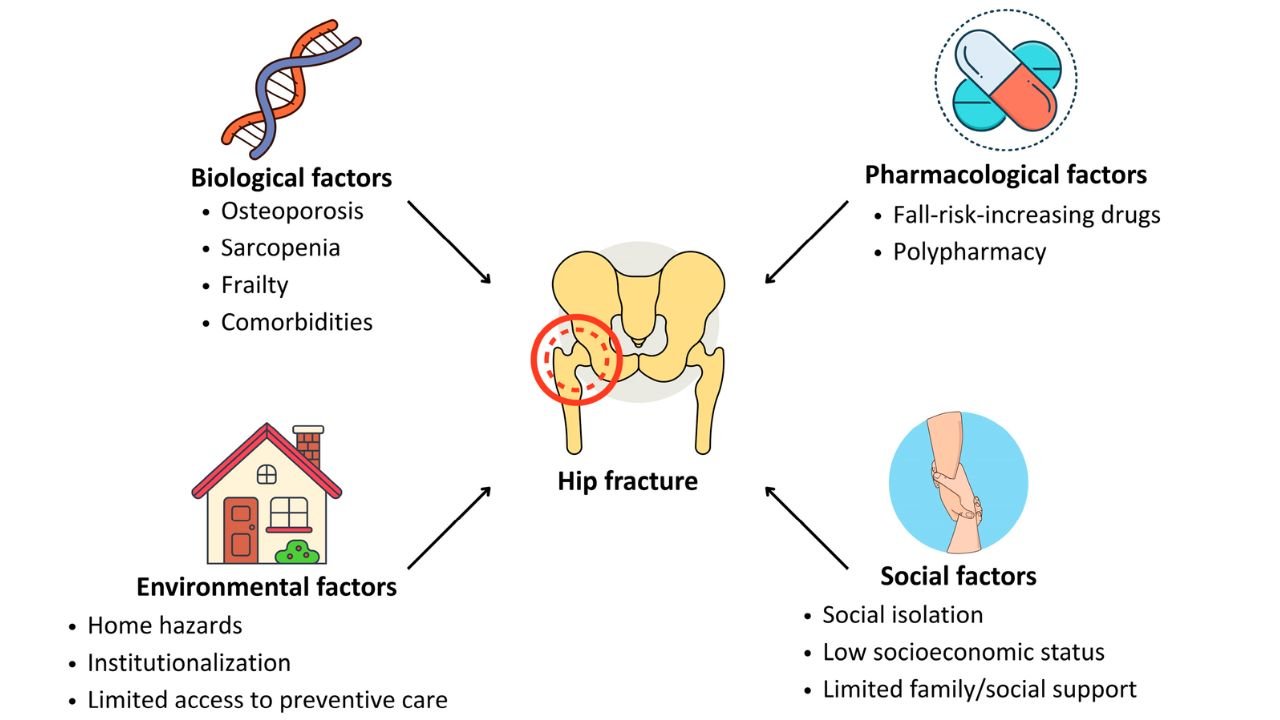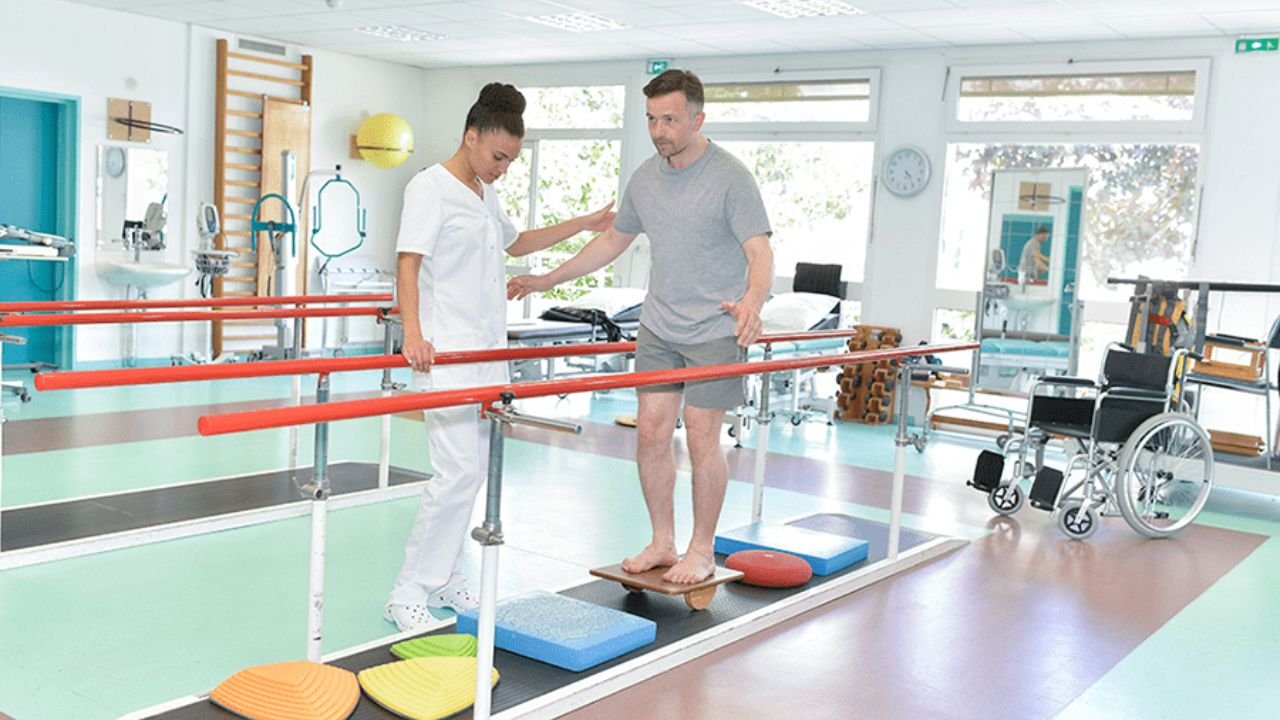Curious about hip fractures? Learn what causes them, how they’re treated and how recovery works. This comprehensive guide simplifies it all. Boost your knowledge today!
Hip Fractures
Hip fractures are serious injuries, especially common among older adults. These fractures typically result from falls or trauma and can have a major impact on mobility and quality of life. This guide breaks down everything you need to know—what causes hip fractures, how they’re treated and how to recover fully and safely.
Knowing about hip fractures is more than just medical knowledge—it can help prevent long-term disability or even life-threatening complications. Being informed means you or your loved ones can take action quickly, understand your options, and promote better outcomes. A hip fracture is a break in the upper portion of the thigh bone (femur), close to where it connects to the hip joint. These fractures often happen due to a fall or accident and are especially common in individuals over 65 due to bone weakening from osteoporosis.
The hip is a ball-and-socket joint that connects the thigh bone (femur) to the pelvis. It plays a vital role in supporting body weight and allowing movement such as walking, sitting, and bending.
Fast Facts & Statistics
Over 300,000 older adults in the U.S. are hospitalised for hip fractures every year. Women are more likely to experience hip fractures due to higher rates of osteoporosis. Recovery is often long and requires surgery in most cases.
Age-Related Factors
As people age, bones become more fragile due to a loss of bone density. This natural decline, along with balance and muscle coordination issues, makes older adults more susceptible to hip fractures.
Medical Conditions That Increase Risk
Conditions like osteoporosis, arthritis, Parkinson’s disease and diabetes can weaken bones or affect mobility, raising the risk of falls and fractures.
Lifestyle Contributors
Poor diet (especially low calcium or vitamin D), smoking, lack of physical activity, and alcohol abuse can contribute to bone weakening, making fractures more likely.
Accidents and Falls
Simple slips, trips on uneven surfaces, or even minor stumbles can result in serious fractures, particularly for those with already compromised bone strength.
Intense hip or groin pain, inability to stand or walk, stiffness, bruising or swelling around the hip, and the leg appearing shorter or turned outward.
When to Seek Medical Help
If someone falls and shows any of the symptoms above, especially if they cannot move or bear weight, seek emergency care immediately. Early diagnosis is key to preventing further complications.
Diagnostic Process
Doctors may use X-rays to detect fractures, MRI or CT scans for more detailed images and physical examinations to assess range of motion and pain level.
Importance of Early Detection
Identifying a hip fracture quickly allows for timely treatment, which improves healing outcomes and minimises long-term complications like muscle wasting or blood clots.
Femoral Neck Fracture
Occurs just below the ball of the hip joint. This type often disrupts blood flow to the bone and may require a hip replacement.
Intertrochanteric Fracture
Occurs between the neck of the femur and the shaft. This type is more common and usually treated with a metal plate and screws.
Subtrochanteric Fracture
This fracture occurs below the lesser trochanter. It’s less common and may be more difficult to heal due to the strong muscles pulling on the broken pieces.
Each type requires specific treatment approaches, depending on the location and severity of the fracture.
Non-Surgical Approaches
Non-surgical options include bed rest, pain medication, physical therapy and mobility aids like walkers or canes. These are typically for stable or minor fractures and patients who may not be suitable candidates for surgery.
Surgical Treatments
Most hip fractures require surgery, including internal fixation (screws and rods), hemiarthroplasty (partial hip replacement) and total hip replacement. The choice of surgery depends on the type of fracture, patient age, bone condition and overall health.
Choosing the Right Plan
Treatment is personalized. Doctors consider age and health status, level of mobility before the fracture, type and severity of the fracture and patient and family preferences when determining the best course of action.
What to Expect
Recovery begins in the hospital with pain management, physical therapy and gradual return to movement. It then transitions to rehab centres or at-home care.
Phases of Recovery
Recovery is divided into three main phases: the acute phase (0-2 weeks), focusing on pain control and preventing complications; the rehabilitation phase (2-12 weeks), where physical therapy helps regain strength and mobility and the long-term recovery phase (3+ months), which involves continued improvement and possible return to daily activities.
Role of Physical Therapy
Physical therapy plays a crucial role in recovery by helping patients regain movement, build strength and restore balance. This specialized care is designed to minimize the risk of future falls and maximize functional recovery.
Post-Surgery Care Tips
Effective post-surgery care is critical to recovery. This includes keeping the surgical area clean and dry, taking medications as prescribed, attending follow-up appointments and watching for signs of infection.
Importance of Diet & Nutrition
A nutrient-rich diet accelerates healing. Key nutrients include calcium and vitamin D for bone health, protein for tissue repair and iron and fluids to support overall energy and recovery.
Staying Active Safely
Low-impact exercises like walking or water therapy help regain strength and mobility without overstraining the body.
Don’t Overlook Mental Health
The recovery process can be mentally challenging. It’s normal to feel frustration or sadness during this time, so seeking support from a counsellor, joining a support group or talking to loved ones can be extremely helpful in navigating these emotional hurdles.
Lifestyle Changes That Help
Healthy habits such as quitting smoking, limiting alcohol intake, eating a balanced diet and staying active can all contribute to stronger bones and a reduced risk of fractures.
Risk Reduction Strategies
Regular bone density tests, medication reviews, and environmental safety modifications (like removing tripping hazards and using assistive devices) can significantly reduce fracture risk.
Fall Prevention Tips
Simple steps like installing adequate lighting, securing loose rugs, wearing non-slip shoes, and practising balance exercises can reduce the chances of falling and help maintain mobility and independence.
No, walking on a fractured hip is highly unadvisable as it can worsen the injury and delay recovery. Immediate medical attention is necessary.
Recovery time varies but typically ranges from 6 to 12 weeks, followed by months of rehabilitation to regain full strength and mobility.
Signs of a hip fracture include severe pain in the hip or groin, difficulty bearing weight, swelling, bruising, or an abnormal leg position.
While very minor fractures might heal with rest and good circulation, most hip fractures require medical treatment, often involving surgery, to ensure proper healing.



